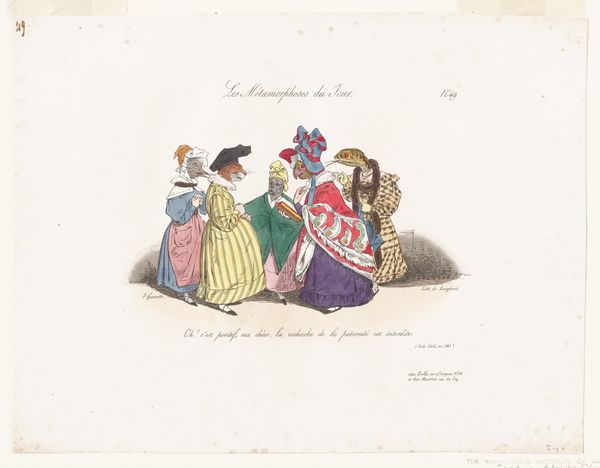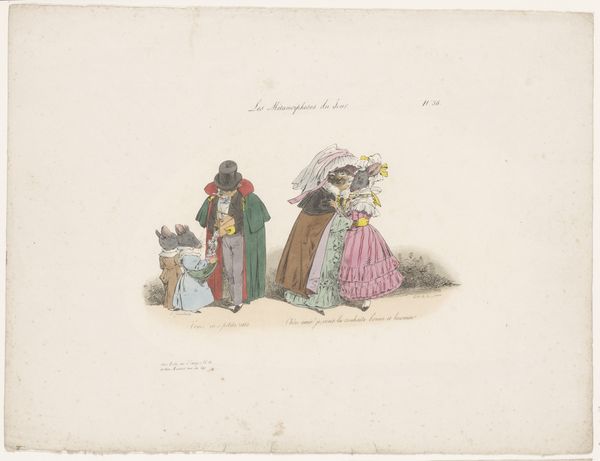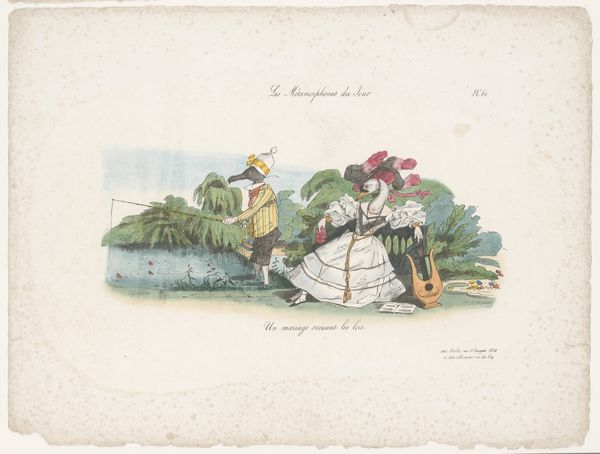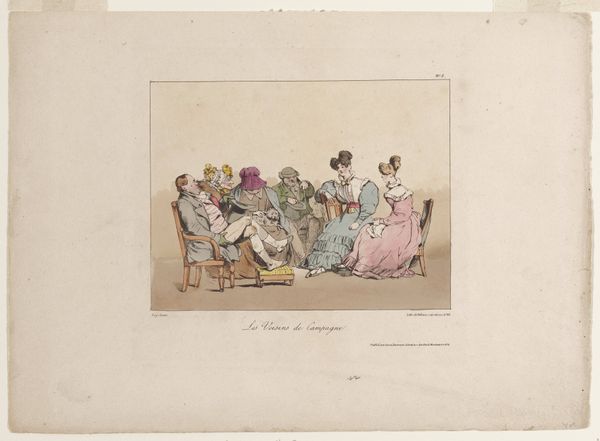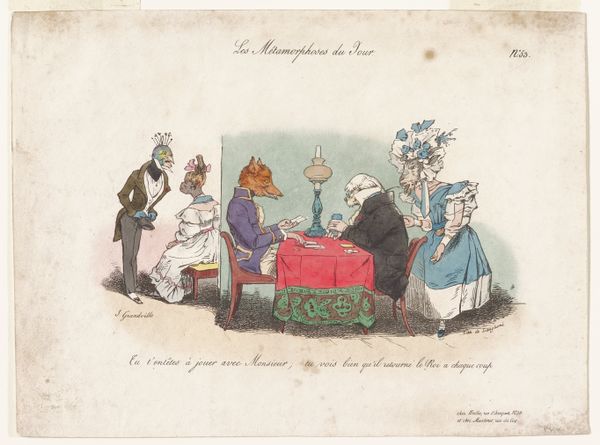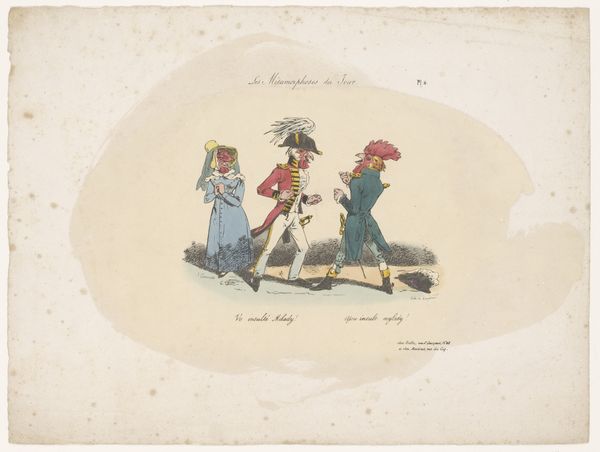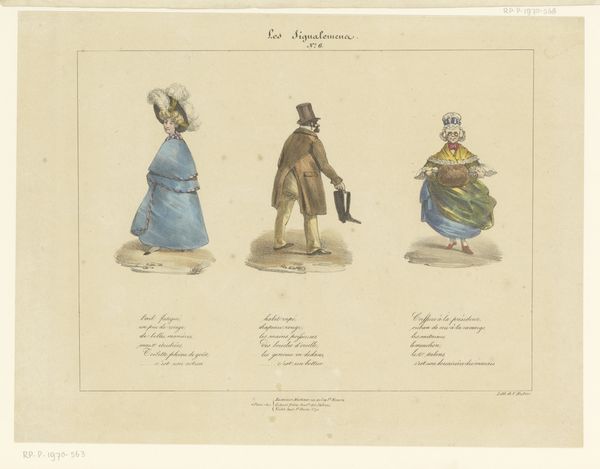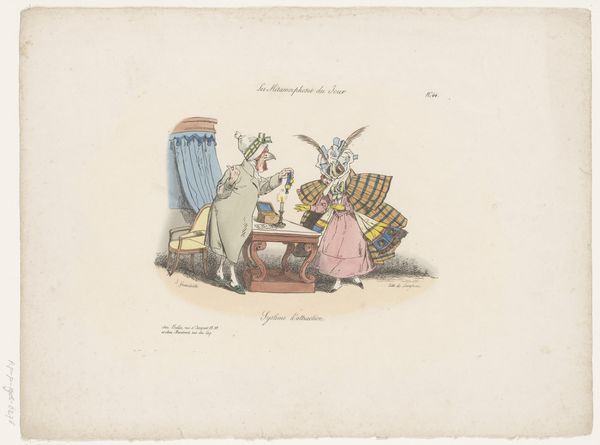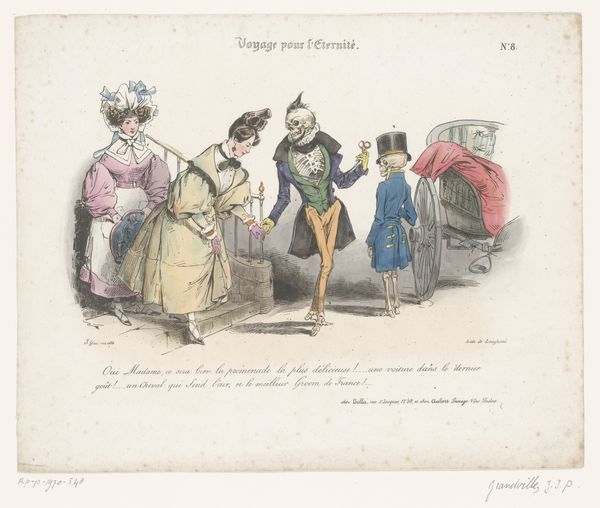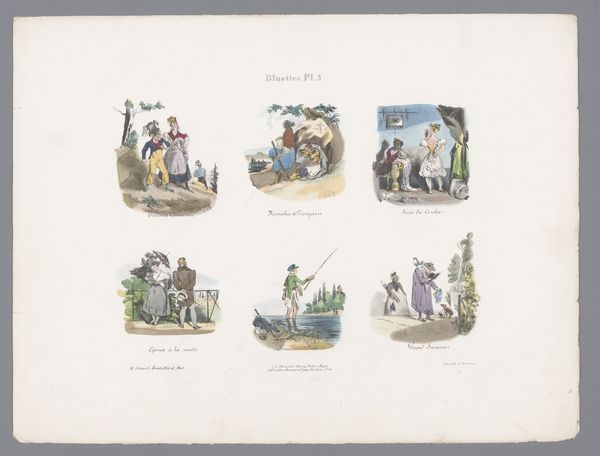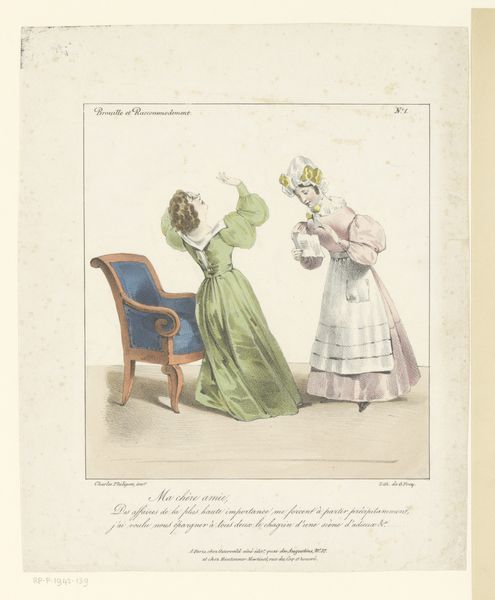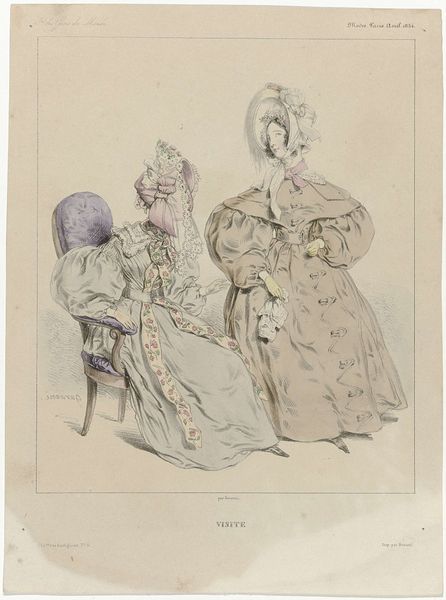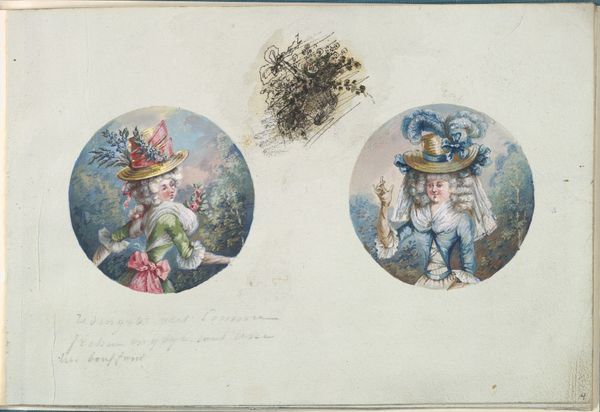
drawing, print, etching, watercolor
#
portrait
#
drawing
# print
#
etching
#
caricature
#
figuration
#
watercolor
#
romanticism
#
line
#
genre-painting
#
watercolor
Dimensions: 6 3/4 x 6 3/4 in. (17.15 x 17.15 cm) (image)
Copyright: Public Domain
Curator: This is a delightful print titled "The Walking" by Les Langlume, created around 1829. It combines etching and watercolor. What strikes you first about it? Editor: There's a wonderful lightness despite the sharp satire. The elongated figures and the pastel watercolor lend it an almost whimsical feel, though their animalistic faces create an odd juxtaposition. Curator: It is part of a series called "Les Métamorphoses du Jour", which translates to "The Metamorphoses of the Day." It was a popular form of social commentary during that period in France, depicting the emerging bourgeoisie as animals to mock their affectations. Editor: The choice of animals, though, feels very pointed. That stout, pig-like man in the center, for instance – he’s the image of self-satisfied gluttony. What societal norms do these animal-human hybrids play upon? Curator: They're poking fun at social mobility. Those who’d recently acquired wealth, mimicking aristocratic fashion without truly understanding it, were prime targets for ridicule. You see it especially in their clothing – overly elaborate for what's ostensibly a casual walk. The print satirizes the aspirations and anxieties tied to class in post-Revolutionary France. Editor: Absolutely. Their garments become a stage upon which to showcase status. The bows, frills and bonnets seem almost too large for these creatures. There's a sense of forced presentation—a common motif. They are performing a charade of wealth and refinement, the weight of societal expectations palpable on their…snouts. Curator: The animal heads provide a safe way to critique public figures, particularly in a politically volatile time. It creates distance and deniability. The title itself, “The Walking,” emphasizes the public performance aspect of social life. These figures are not just existing; they are conspicuously "walking". Editor: I see symbols of vanity, greed, and perhaps even social climbing encoded within this animal allegory. Even now, nearly two centuries later, these caricatures resonate because those themes unfortunately don't ever go away. Curator: It’s remarkable how Langlume manages to make social criticism feel both cutting and somehow charming, even humorous. Editor: Yes, it speaks to the enduring power of satire, I think, to reflect humanity's timeless absurdities.
Comments
No comments
Be the first to comment and join the conversation on the ultimate creative platform.
